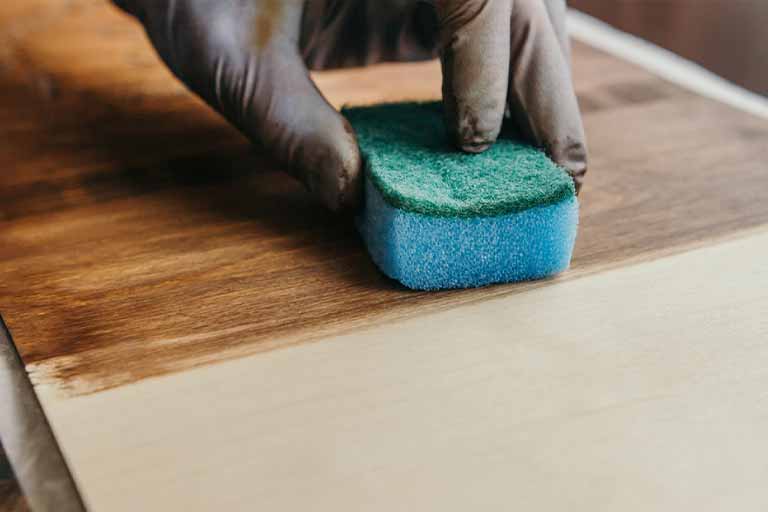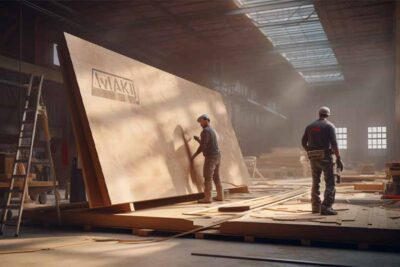
How to Stain Plywood: Techniques and Products
How to Stain Plywood: Techniques and Products
When it comes to designing a space, whether it is a home or an office, the materials you use can make a huge difference. Plywood is one such material that has become popular due to its durability and versatility. However, in order to make the most out of its natural beauty, it is essential to know how to stain it properly.
Staining plywood is important because it enhances the natural beauty of the wood and protects it from damage. In this article, we will discuss the different techniques and products you can use to stain your plywood effectively, and we will guide you through the entire process.
Choosing the Right Stain
Choosing the right stain is crucial to achieve the desired results. There are different types of stains available, including oil-based, water-based, and gel stains. Oil-based stains are more durable, but they take longer to dry. Water-based stains dry faster, but they may not penetrate the wood as deeply as oil-based stains. Gel stains are thicker and easier to apply, but they may not be as durable as other types of stains.
When choosing a stain, you need to consider the color, transparency, and type of wood. The color of the stain will affect the overall appearance of the plywood. The transparency of the stain will determine how much of the wood grain is visible. The type of wood will affect how the stain penetrates the wood and how it looks after it dries.
It is important to note that there are different grades of plywood available, which can also affect the final result. For instance, birch plywood is a popular choice due to its strength and durability. It is also available in different grades, such as B/BB, BB/BB, and BB/CP, which vary in terms of the number of defects and the quality of the veneers used.
Preparing the Plywood
To prepare the plywood for staining, you need to sand it and clean it thoroughly. Sanding removes any rough spots or imperfections on the surface of the wood and ensures that the stain will penetrate evenly. Cleaning removes any dust, dirt, or debris that may interfere with the staining process.
Start by sanding the plywood with a fine-grit sandpaper. Sand in the direction of the grain to avoid damaging the wood. Once you have sanded the surface, wipe it down with a damp cloth to remove any dust.
It is important to note that plywood slats are also available, which can make the sanding process easier. Plywood slats are thin, flexible plywood sheets that can be used to sand curved or irregular surfaces.
Applying the Stain
When applying the stain, you can use a brush, roller, or sprayer. A brush is the most common method, but a roller or sprayer can be more efficient for larger areas. Regardless of the method you choose, make sure to apply the stain evenly and smoothly.
Start by applying the stain to the edges of the plywood using a brush. Then, work your way inward, applying the stain in the direction of the grain. Apply the stain generously, but avoid over-saturating the wood. Once you have applied the stain, wipe off any excess with a clean cloth.
It is important to note that there are different types of plywood that are specifically designed for certain applications. For instance, film faced plywood is a type of plywood that is coated with a waterproof film on both sides, making it ideal for exterior use, such as for decking or flooring. Hexa plywood, on the other hand, is a type of plywood that has a hexagonal pattern on one side and a smooth surface on the other, making it ideal for decorative applications.
Finishing the Plywood
To finish the plywood, you need to seal and top-coat it. Sealing protects the wood from moisture and prevents the stain from fading or peeling. Top-coating adds an extra layer of protection and enhances the shine of the plywood.
Start by applying a sealer to the plywood using a brush or roller. Make sure to apply the sealer evenly and smoothly. Once the sealer has dried, apply a top coat using the same method.
There are different finishing options available, including UV prefinished plywood, UV coated plywood, and laminated birch plywood. Each option has its own benefits, so choose the one that suits your needs.
It is important to note that exterior plywood grades are also available, which are specifically designed for outdoor use. These grades are treated with preservatives to prevent decay and insect infestation, making them ideal for applications such as outdoor furniture and construction.
In conclusion, staining plywood is an essential process that enhances the natural beauty of the wood and protects it from damage. By choosing the right stain, preparing the plywood properly, applying the stain evenly, and finishing the plywood with a sealer and top-coat, you can achieve a beautiful and durable finish.
If you want to learn more about birch plywood or other types of plywood, contact SFK Plywood today. As a top plywood manufacturer in the world, we offer a wide range of top plywood brands and top ply brands that are of the highest quality. Our plywood market price is competitive, and we are committed to providing our customers with the best products and services.






